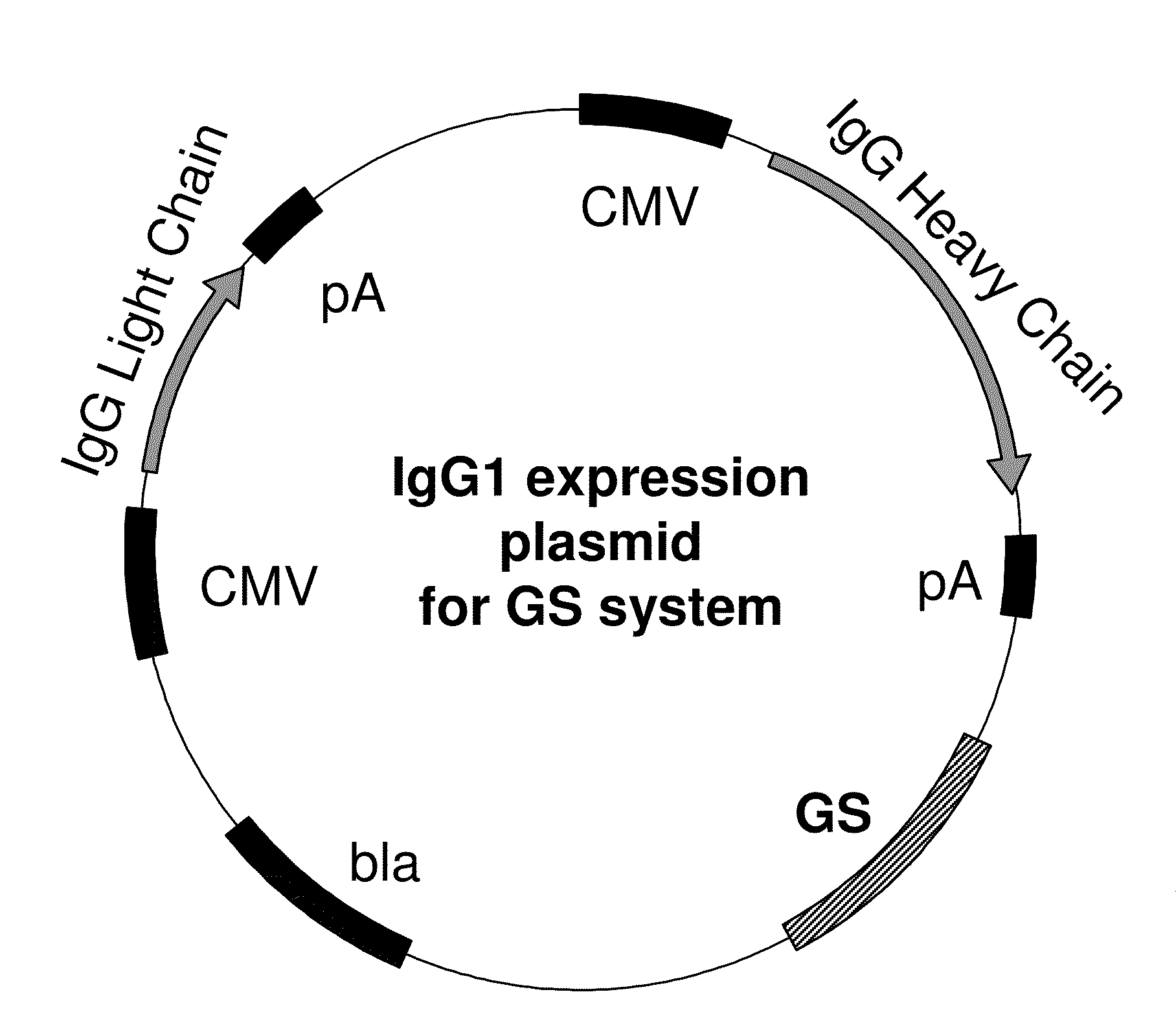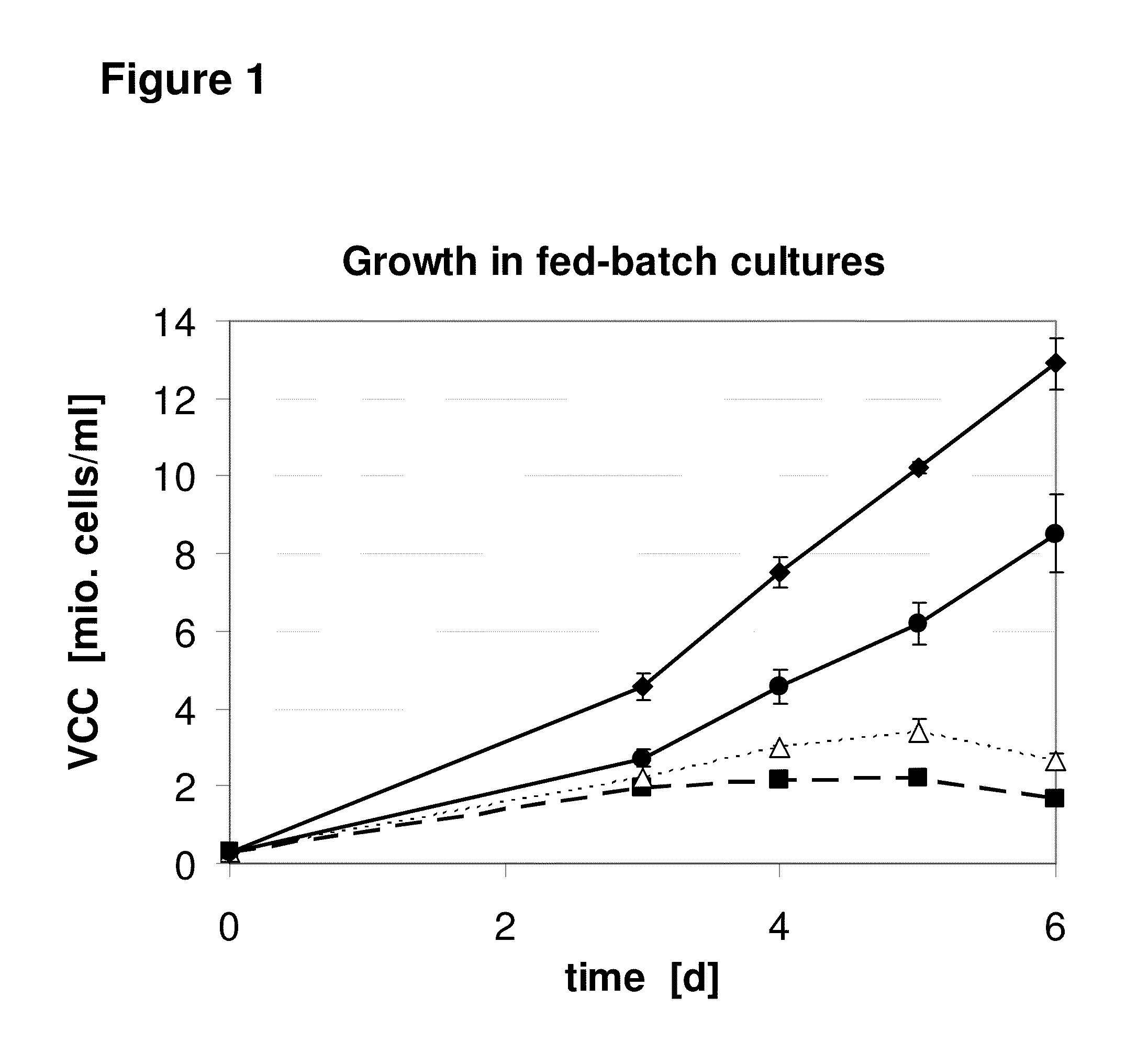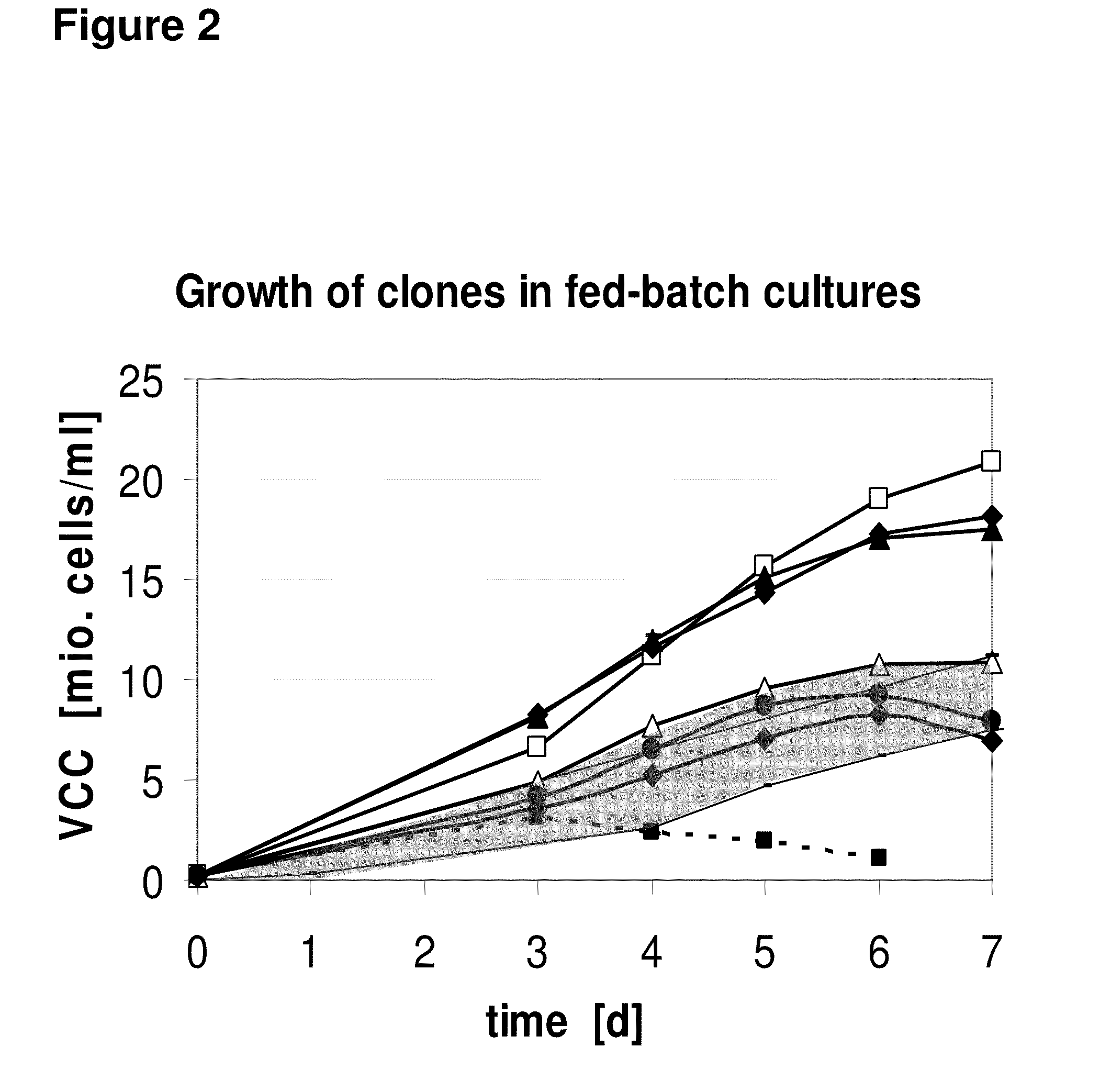Production host cell lines
- Summary
- Abstract
- Description
- Claims
- Application Information
AI Technical Summary
Benefits of technology
Problems solved by technology
Method used
Image
Examples
example 1
Generation of CHOpper® Cell Pools
[0303]DHFR-deficient CHO-DG44 (Urlaub & Chasin, Cell 33, 405-412; 1983) are stably transfected with a plasmid carrying a DHFR expression cassette (SEQ ID NO: 5, in 5′-3′ orientation; Exons of the DHFR minigene are highlighted in grey and bold print. Start and stop codons are underlined):
[0304]Stably transfected cell pools are generated by selection in the absence of hypoxanthin and thymidine (HT) supplementation. Growth characteristics of the arising stable cell pools are analysed in seedstock cultures and during fed-batch cultivation in shake flasks which represent an established screening model for fermentation / production processes. For comparison, wild type CHO cells (ECACC no. 8505302), the parental CHO-DG44 cell line as well as CHO-DUX (B11) cells are included in these experiments.
[0305]FIG. 1 shows the growth profiles of all cell lines in a six day fed-batch process. DHFR-deficient CHO-DG44 as well as CHO DUX (B11) cells show markedly reduced c...
example 2
Generation and Screening of Monoclonal CHOpper® Cell Lines
[0307]The fastest growing CHOpper cell pool is subjected to FACS-based single cell cloning to generate monoclonal CHOpper cell lines. The growth properties of the clones is then analysed in fed-batch fermentation runs. The parental CHO-DG44 cell line as well as three producer cell clones from independent cell line generation projects expressing different antibody products are included for comparison.
[0308]As shown in FIG. 2, all monoclonal CHOpper® cell lines grow markedly faster and reach far higher integrals of viable cells over time (IVCs) in fed batch cultures compared to CHO-DG44 cells. The level of growth improvement is heterogeneous, the difference compared to the parental cell line ranging from 2.5 to 6-fold within six days. Some of the CHOpper® clones show similar growth characteristics as the average of the three producer cell clones, but some CHOpper® clones even grow significantly faster.
[0309]From all CHOpper® cl...
example 3
Characterization and Unique Identification of CHOpper® Cell Lines
[0312]CHOpper® cell lines can be described in general as cells with heterologous DHFR expression, whereby DHFR is not functionally linked / does not serve as selection marker for a gene of interest.
[0313]The CHOpper® cell lines described in the present invention contain a DHFR expression cassette as depicted in FIG. 5A (SEQ ID NO:5) comprising: Upstream regulatory sequences (825 bp) derived from the hamster DHFR gene including the DHFR promoter, DHFR minigene, comprising exon 1, intron 1 and exon 2 of the hamster DHFR gene, and TAA stop codon and 647 bp of the 3′ untranslated region including polyadenylation signal.
[0314]The vector construct used for generation of the CHOpper® cell lines described in the present invention is shown in FIG. 5B and contains the following functional elements:
[0315]Cytomegalovirus (CMV) enhancer / promoter
[0316]Multiple cloning site
[0317]Polyadenylation signal
[0318]DHFR expression cassette
[031...
PUM
| Property | Measurement | Unit |
|---|---|---|
| Fraction | aaaaa | aaaaa |
| Volume | aaaaa | aaaaa |
| Volume | aaaaa | aaaaa |
Abstract
Description
Claims
Application Information
 Login to View More
Login to View More - R&D Engineer
- R&D Manager
- IP Professional
- Industry Leading Data Capabilities
- Powerful AI technology
- Patent DNA Extraction
Browse by: Latest US Patents, China's latest patents, Technical Efficacy Thesaurus, Application Domain, Technology Topic, Popular Technical Reports.
© 2024 PatSnap. All rights reserved.Legal|Privacy policy|Modern Slavery Act Transparency Statement|Sitemap|About US| Contact US: help@patsnap.com










